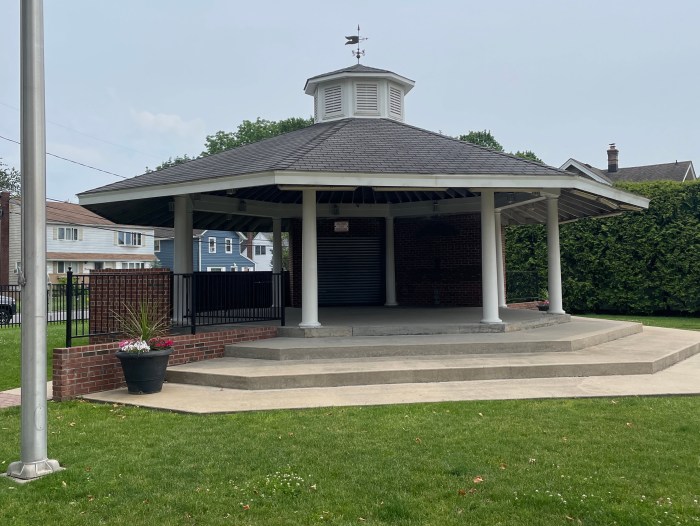“Long Island is absolutely at risk to be hit hard by the effects of global warming,” says Rep. Steve Israel (D-Huntington). “As a coastal community, we will be forced to contend with rising sea levels and changing weather patterns. That’s one reason why I’ve been fighting to advance and implement clean energy technologies in the United States.”
His colleague, Rep. Peter King (R-Seaford), doesn’t share Israel’s enthusiasm for governmental activism.
“We are a nation still on the tipping point of a double-dip recession,” King says. “We need a government that is focused on strengthening the economy and employment—not adding red tape. That said, any environmental standards or regulations focused on Long Island must be achievable in practice and impose the least amount of burden. As to the Durban conference, no one should be surprised that it was a total disaster.”
Although some nuances get lost in translation, echoes of the political debate in Durban about the economics of combating global warming can be heard here in the United States, as businesses and environmentalists are pitted together over the costs of solving the looming problem.
“It is difficult for me to see the U.S. Congress doing anything on the subject given the way it is constituted right now,” says Assemb. Robert Sweeney (D-Lindenhurst), chairman of the Assembly committee on environmental conservation. “Our goal is to get New York State in a position where we are not a contributor to this problem.”
But compelling the Empire State to act is difficult. The Assembly has repeatedly passed his bill to amend the state’s conservation law to take global warming into account only to see it die in the State Senate.
Sweeney says the measure would require businesses to meet new standards over the next 30 years. It’s “an exceptionally moderate proposal that would benefit everybody including, quite frankly, the businesses that are complaining the loudest.”
Additionally, NYS has two other major emissions-reduction initiatives as goals already: to have 45 percent of our energy come from renewable sources and conservation by 2015; also to reduce the state’s greenhouse gas emissions 80 percent below 1990 levels by 2050.
State Senate Majority Leader Dean Skelos (R-Rockville Centre) did not respond to numerous requests for comment for this story.
Sweeney sees the opposition to global warming initiatives like the ones he and his colleagues have been proposing starting to melt.
“Most no longer take the far-right position that climate change isn’t happening,” Sweeney says. “Even though they may say it’s a ‘natural change’ and not ‘man-made.’ But now the weight of the evidence is swinging against that, too. My only hope is that we can do something that is effective before it is too late, because like an ocean liner, you’re not going to stop this on a dime and turn it around. Anything we do now won’t show beneficial effects for decades. But the longer we wait, the less likely we are to have an impact.”
His colleague, Assemb. Steven Englebright (D-East Setauket), takes the long view. A geologist, Englebright says, “The question is not whether sea level is rising. It has been rising for the last 21,000 years since the glaciers created Long Island….The rate of the rise is something that should concern everybody in the present context.”
Because “we are a sandy island, our fresh water reserves are basically fed by rainwater, and the island acts like a big sponge,” Englebright says. “If the sea level rises, then the fresh water table will be pushed higher.”
As a result, communities on the South Shore will see the impact on their sewers, septic systems and underground infrastructure. Englebright warns that it may not be possible to take remedial action because the costs could be “astronomical.” He says the solution is slow down the rate of sea level rise by being “more attentive to greenhouse gas emissions rather than trying to build “the Great Wall of China around Long Island, which probably wouldn’t work,” he says because rising water would undermine the foundation, the cost would be prohibitive, and the aesthetics would make the Island resemble a prison.
“What we can afford—and what we should do—is move aggressively toward renewable energy on a national and global level,” Englebright says, “and reduce our use of fossil fuels and thereby the creation of greenhouse gases through combustion. That’s got to be done.”
Englebright has helped pass legislation calling for more solar and wind power generation. LI, he says, has led the way in the past on environmental action, such as the ban on the pesticide DDT.
“It isn’t that the whole world has to conform because it’s a good thing for Long Island,” Englebright says. “It’s a good thing for most of the population of planet Earth!”
Since 2005, New York has been one of 10 states involved in the Regional Greenhouse Gas Initiative, which requires power plants larger than 25 megawatts to purchase allowances for every ton of carbon they emit. According to Ross Gould, air and energy program director for the Environmental Advocates of New York, last year this measure yielded $6 million for funding renewable energy projects on Long Island alone, such as new boilers, solar panels and better insulation. Gould observed that opposition to the initiative was intense from the business community and the power industry.
“They claimed that the initial greenhouse gas initiative would cause sky-rocketing energy costs and electricity rates, but that hasn’t happened,” he says. “New Yorkers are saving millions of dollars!”
He says opponents claim that “any type of policy is ‘job killing,’” but according to studies some 16,000 jobs have been added in the states involved in the initiative. As Lewis said, making Long Island homes green puts people here to work.
“You can’t outsource that,” he says.
With additional reporting by Lea Weatherby

































